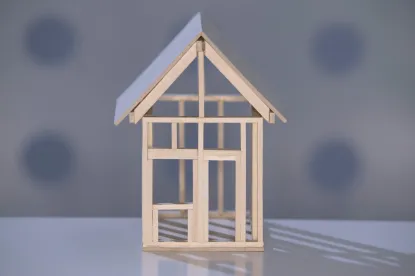On May 8, 2013, the San Diego Regional Water Quality Control Board approved a new municipal separate storm sewer system (MS4) permit that will have far-reaching impacts on both new development projects and existing facilities in San Diego, southern Orange, and southwestern Riverside Counties. This Regional MS4 Permit will regulate both storm water and non-storm water (dry weather) discharges into the region's storm water conveyance facilities, which carry runoff to inland surface waters, bays, estuaries and coastal waters.
The new MS4 Permit contains tough numeric limits for storm water pollutants. Although the permit directly regulates cities, counties and special districts who own and operate large MS4s, it requires these permittees to impose the permit's requirements on development projects, construction sites and existing development (including commercial, industrial, municipal and residential areas) through statutes, ordinances, permit conditions, contracts, orders, and other similar means. Developers, contractors and existing facility owners will therefore be impacted as permittees attempt to comply with the permit's requirements. In particular, the permit emphasizes on-site retention and treatment of surface water runoff, as well as practices to protect and return water courses to a more natural condition.
Key Provisions Impacting Development Projects
-
All development projects will be required to include Low Impact Development Best Management Practices (BMPs) to protect natural areas and remove pollutants from storm water discharges, such as maintaining and restoring natural reservoirs and drainage corridors, providing buffer zones for natural water bodies, conserving natural areas within the project's footprint, constructing streets, sidewalks, and parking aisles to minimum widths, minimizing the project's impervious footprint, using permeable materials, minimizing soil compaction to landscaped areas, and using landscaping designed to receive and infiltrate, retain or treat runoff from impervious areas.
-
Priority Development Projects will be required to include additional BMPs to retain or treat onsite the pollutants contained in the volume of storm water runoff produced from a 24-hour 85th percentile storm event. Priority Development Projects are new developments creating 10,000 square feet or more of impervious surface or redevelopment projects that create or replace 5,000 square feet or more of impervious surface collectively over an existing site of 10,000 square feet or more. Also, new or redevelopment projects that create or replace 5,000 square feet or more of impervious surface and that are also restaurants, hillside development projects, parking lots, or streets, roads, highways, freeways or driveways are Priority Development Projects.
-
Priority Development Projects will be required to implement practices to manage hydromodification (the erosion and degradation of natural channels and increased sediment loading in receiving waters caused by increased impervious surfaces and increased flow rates) by limiting storm water runoff flow rates and durations to not more than 10 percent of pre-development (not pre-project) conditions.
-
Offsite alternative compliance options for Priority Development Projects, such as funding or implementing approved offsite projects (for example, retrofitting projects; channel, stream, or habitat rehabilitation projects; and water supply augmentation projects), may be available if the permittees choose to make such projects available.
-
Priority Development Project applications which have received approval by 18 months after the effective date of the permit may be able to use previous land development requirements.
Key Provisions Impacting Construction Sites
-
Before being issued a permit to commence construction, construction projects that involve ground disturbance or soil disturbing activities that could generate pollutants in storm water runoff will be required to submit a pollution control plan, construction BMP plan, and/or an erosion and sediment control plan.
-
Construction sites must implement BMPs to reduce the discharge of pollutants in storm water and prohibit non-storm water discharges into MS4s. BMPs must be site specific, seasonally appropriate, and construction phase appropriate and be implemented year-round.
-
Construction sites are subject to inspection.
Key Provisions Impacting Existing Facilities
-
Commercial, industrial and municipal facilities will be required to implement, operate and maintain BMPs as designated by the permittees based on type of facility and pollutant-generating activity to control storm water runoff.
-
Almost all non-storm water discharges to MS4s must be prohibited, including water from building fire suppression system maintenance (e.g., sprinkler line flushing), crawl space pumps, air conditioning condensation, water line flushing, and landscape irrigation.
-
For residential areas, permittees must promote and encourage BMPs to reduce pollutants in storm water discharges and prohibit non-storm water discharges. Residential vehicle washing should be directed to landscaped areas or other pervious surfaces where feasible, and residual chlorine, algaecide, filter backwash and other pollutants must be removed from dechlorinated swimming pool discharges.
-
Permittees must inspect all inventoried existing development at a minimum of once every five years to ensure compliance.
Permit Implementation
The MS4 Permit will be implemented in a phased manner as current permits expire, covering San Diego County immediately, southern Orange County on or after December, 2014, and southwestern Riverside County on or after November, 2015. California also separately regulates specific industrial and construction site dischargers directly through a general permit issued by the State Water Resources Control Board (a new Industrial General Permit is expected in 2013). Compliance with an industrial or construction general permit does not excuse any additional requirements imposed under the new MS4 permit; covered facilities will be obligated to comply with the requirements of both.


 />i
/>i

